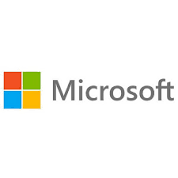 As proponents of a General Artificial Intelligence (“General AI”) prepare for “The Singularity,” which will ultimately meld computing resources with human organisms, #VoiceFirst service developers have their sights set, instead, on applying selected elements of AI to build better conversational agents or assistants. Conversational User Interface specialists are on a mission – part art, but mostly science – to deliver resources that are able to recognize an individual’s intent or multiple intents during the course of meandering, “multi-turn” sessions. With its acquisition of Conversational AI specialist Semantic Machines, Microsoft has put itself ahead of the pack in pursuit of this elusive goal.
As proponents of a General Artificial Intelligence (“General AI”) prepare for “The Singularity,” which will ultimately meld computing resources with human organisms, #VoiceFirst service developers have their sights set, instead, on applying selected elements of AI to build better conversational agents or assistants. Conversational User Interface specialists are on a mission – part art, but mostly science – to deliver resources that are able to recognize an individual’s intent or multiple intents during the course of meandering, “multi-turn” sessions. With its acquisition of Conversational AI specialist Semantic Machines, Microsoft has put itself ahead of the pack in pursuit of this elusive goal.
The financial terms of the deal have not been disclused, but David Ku, the CTO of AI and R&D at Microsoft made the announcement in this blog post. Ku gave more details about the acquisition in an exclusive article by Venture Beat’s Khari Johnson. In the lead paragraph, Johnson notes that former Siri chief scientist Larry Gillick and researchers like Percy Liang, who helped create Google Assistant, are members of Semantic Machines’ staff, this is much more than a classic “acquihire”. Microsoft made a point of keeping the company pretty much intact and stepping up plans to create the first “conversational AI for excellence” affiliated with the University of California at Berkeley.
Other coverage in tech journals characterized the investment as catch-up efforts by the Colossus of Redmond to bring Cortana up to snuff with Google Assistant, Apple Siri, Amazon Alexa and Baidu Duer, among others. Yet, that view belies the success that Microsoft has already experienced among more than a million developers using Microsoft Cognitive Services and more than 300,000 developers taking advantage of the tools and APIs supporting Azure Bot Service. That 1.3 million people Microsoft’s DevWorld easily rivals the people building chatbots, skills or actions for its rivals.
Tangible Value for Improved Conversations
It is hard to put a hard dollar value on improved accuracy for conversational user interfaces. This acquisition is a testimonial to the tangible value that will accrue to companies that engage conversationally with their prospects, customers and clients. Cortana is, reportedly on more than 400 million devices and at the recent Microsoft Build developer conference, at Satya Nadella’s request, they proudly demonstrated how easy it is for Cortana to carry out a conversation with Amazon Alexa (and vice versa). This level of openness seems modest, but indicative of the sort of features – including more accurate intent recognition – that will distinguish Cortana and its cohort of Microsoft-powered agents from other Intelligent Assistance offerings.
Categories: Intelligent Assistants

 The Power of Conversation Meets the Art of Design with Figma Make
The Power of Conversation Meets the Art of Design with Figma Make  Why Voice AI Is Foundational for Enterprise Innovation (Webinar)
Why Voice AI Is Foundational for Enterprise Innovation (Webinar)  Zendesk Relate: Getting the Job Done with a Resolution Platform
Zendesk Relate: Getting the Job Done with a Resolution Platform  Trust and Safety in AI Voice Agents: Insights from Gridspace’s Approach
Trust and Safety in AI Voice Agents: Insights from Gridspace’s Approach